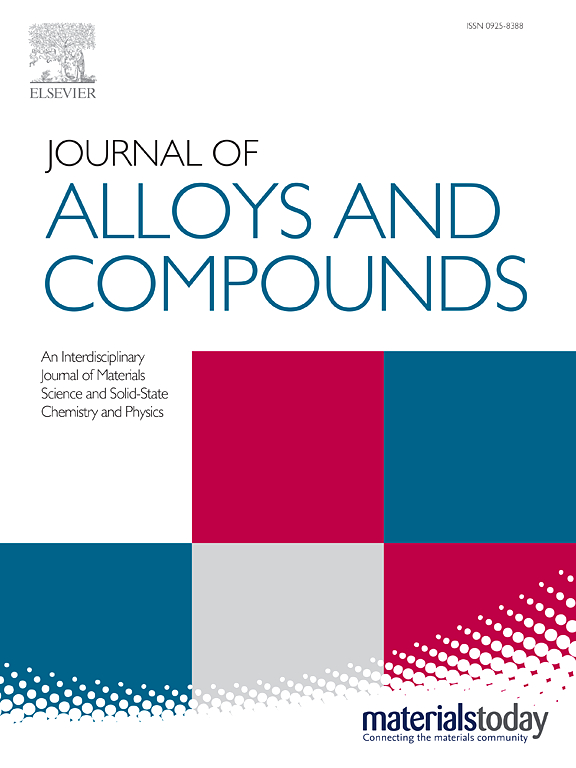Vibrational properties of photochromic yttrium oxyhydride and oxydeuteride thin films
IF 5.8
2区 材料科学
Q2 CHEMISTRY, PHYSICAL
引用次数: 0
Abstract
A comprehensive study of the vibrational properties of photochromic yttrium oxyhydride (YHO) and oxydeuteride (YDO) thin films is presented. These films are deposited using reactive magnetron sputtering, followed by post-oxidation. Our investigation employs vibrational Fourier-transform infrared (FTIR) spectroscopy, in conjunction with first-principles Density Functional Theory (DFT) calculations. The FTIR spectra of the films reveal broad vibrational bands, primarily attributed to the disordered structure containing small crystallites (<10 nm), as confirmed by solid-state nuclear magnetic resonance and X-ray diffraction measurements. An isotopic shift from approximately 900 to 745 cm−1 is observed in the hydrogen/deuterium-related vibration band, while the lower frequency bands (< 600 cm−1) remain unaffected upon replacement of hydrogen with deuterium. These experimental observations are consistent with the DFT theoretical calculations for various stable YHO lattices reported in the literature. Illumination of the films with ultraviolet light at 3.3 eV leads to additional absorption not only in the visible light range but also up to approximately 2000 cm−1 in the mid-infrared region. However, no phase transformation change or formation of hydroxyl (OH) groups are observed following illumination. Our findings provide valuable insight into the vibrational and photochromic properties of YH(D)O thin films.
求助全文
约1分钟内获得全文
求助全文
来源期刊

Journal of Alloys and Compounds
工程技术-材料科学:综合
CiteScore
11.10
自引率
14.50%
发文量
5146
审稿时长
67 days
期刊介绍:
The Journal of Alloys and Compounds is intended to serve as an international medium for the publication of work on solid materials comprising compounds as well as alloys. Its great strength lies in the diversity of discipline which it encompasses, drawing together results from materials science, solid-state chemistry and physics.
 求助内容:
求助内容: 应助结果提醒方式:
应助结果提醒方式:


